Documentary looks at the stories behind the region's mouthwatering cuisine, Xu Fan reports.
 Portuguese chef Manuel Joaquim Pena and his wife featured in the documentary. (PHOTO PROVIDED TO CHINA DAILY)
Portuguese chef Manuel Joaquim Pena and his wife featured in the documentary. (PHOTO PROVIDED TO CHINA DAILY)
As the clock hands approach midnight, Ma Qingqi-a delivery driver in Zhongshan, Guangdong province-leaves his home to start his daily routine. Earlier than most of his fellow drivers, he transports fresh vegetables to a wholesale market in Macao. After unloading the goods, Ma relishes the most relaxing time of the day-and orders a cup of coffee and a pineapple bun.
A cultural encounter through food is beautiful and warm, making the documentary not just a mouthwatering treat but also a thought-provoking trip.
Zhang Tongdao, director of the documentary center, Beijing Normal University
As a popular destination renowned for its varied cuisine, Macao lives up to any tourist's expectations for a tasty trip. However, a lesser-known fact is that around 90 percent of the region's fresh ingredients are transported from the Chinese mainland, with the "vegetable basket project"-a decadeslong program to improve food production and supplies-carried out in the Guangdong-Hong Kong-Macao Greater Bay Area.
Ma's routine, exemplifying the project's impact, is seen in Crunch and Munch in Macao, a 4K documentary series jointly produced by the China Media Group and the Macao Special Administrative Region.
With four episodes, each spanning 50 minutes, the documentary has been running on multiple platforms including CCTV-1 and CCTV-9 since Dec 18, two days before the 22nd anniversary of Macao's return to the motherland. Currently, the documentary has been watched by more than 23 million people, and has accumulated 600 million clicks of its related social media content on platforms including Sina Weibo.
The documentary touches on all the major aspects of Macao's food, not least its colorful street snacks and the culinary traditions inherited from early Guangdong and Fujian immigrants, as well as the transformation brought by Macao's handover.
Zhang Hanbing, the chief director, recalls that they first had the idea to produce the documentary in 2019, but their interviews-reaching a total of 397 individuals and restaurant staff in four weeks-started in August last year due to the pandemic.
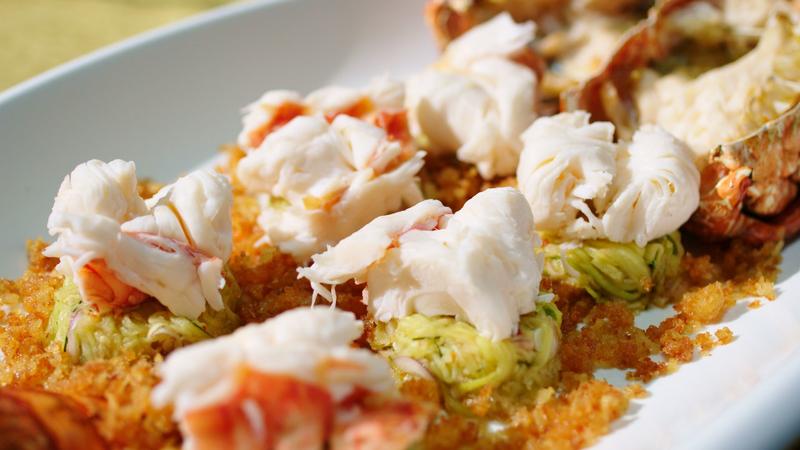 Foods featured in the documentary Crunch and Munch in Macao-Thai-style marinated lobster. The documentary celebrates the special administrative region's colorful street snacks and culinary traditions. (PHOTO PROVIDED TO CHINA DAILY)
Foods featured in the documentary Crunch and Munch in Macao-Thai-style marinated lobster. The documentary celebrates the special administrative region's colorful street snacks and culinary traditions. (PHOTO PROVIDED TO CHINA DAILY)
Talking about the fact that Macao earned UNESCO recognition as a world-leading culinary destination in 2017, Zhang says the region's distinctive openness and hospitality helped merge cooking techniques, as well as ingredients, from the East and the West.
Overcoming a series of challenges, including two regional resurgences of the pandemic and a strong typhoon, Zhang led four teams of eight directors to wrap up the main shoot in mid-October, with a few new scenes, featuring a gourmet festival and the Macao Grand Prix, filmed later in November.
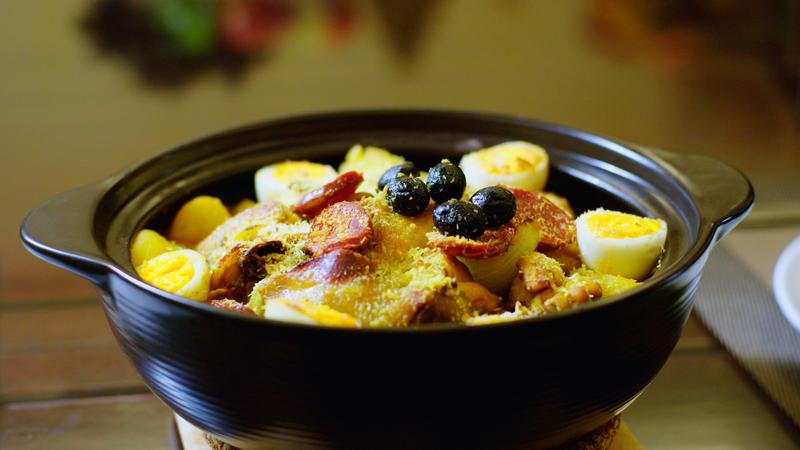 Foods featured in the documentary Crunch and Munch in Macao-chicken curry. The documentary celebrates the special administrative region's colorful street snacks and culinary traditions. (PHOTO PROVIDED TO CHINA DAILY)
Foods featured in the documentary Crunch and Munch in Macao-chicken curry. The documentary celebrates the special administrative region's colorful street snacks and culinary traditions. (PHOTO PROVIDED TO CHINA DAILY)
Despite the difficulties, the shoot was a journey of surprise. Xu Rui, director of one episode, recalls their chance encounter with Audrey Stow, the daughter of the late Andrew Stow, a baker known for the iconic Macao egg tart, a reinvented version that blends the methods of traditional Portuguese egg tarts with English custard tarts.
"Macao egg tarts are so famous that most tourists will rank it highly on their must-try list, so we didn't plan to take much time to feature it. However, Audrey told us some interesting stories, making us change our mind," says Xu.
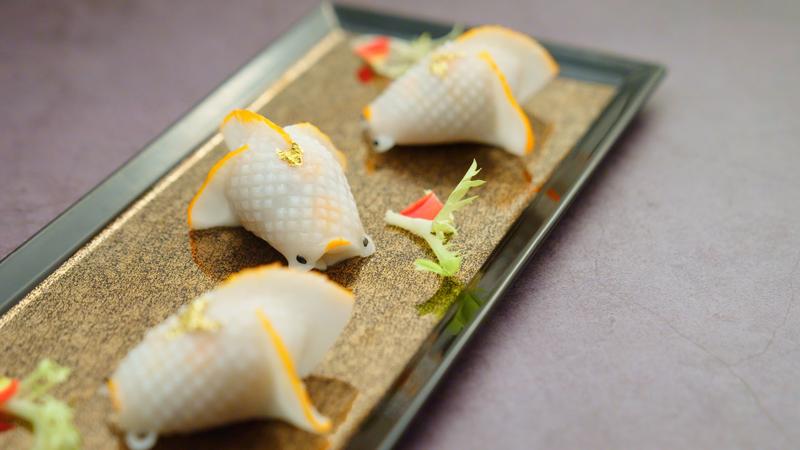 Foods featured in the documentary Crunch and Munch in Macao-dumplings with shrimp stuffing. The documentary celebrates the special administrative region's colorful street snacks and culinary traditions. (PHOTO PROVIDED TO CHINA DAILY)
Foods featured in the documentary Crunch and Munch in Macao-dumplings with shrimp stuffing. The documentary celebrates the special administrative region's colorful street snacks and culinary traditions. (PHOTO PROVIDED TO CHINA DAILY)
Originally traveling to work in Macao as a pharmacist, Andrew Stow shifted his career interest to the food industry, opening up Lord Stow's Bakery in the late 1980s. With an experimental spirit, Stow cooked his special egg tarts with the creatively, crispy scorched top.
However, the brown top-now a signature flavor-was not well-received as most people believed it was burnt. Stow's wife persuaded her husband to give away the tarts for free. The endeavor met with an overwhelmingly positive response, laying the foundation for the bakery franchise's expansion overseas to Japan and the Philippines.
"Audrey told us that she'll never change the egg-tart recipe, as she wants the flavor created by her father to be tasted by future generations. Her love and devotion to her father instills the snack with a touching warmth, making the story more meaningful," says Xu.
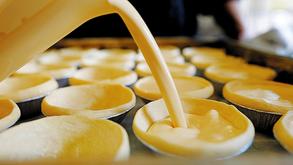 The iconic Macao egg tart. (PHOTO PROVIDED TO CHINA DAILY)
The iconic Macao egg tart. (PHOTO PROVIDED TO CHINA DAILY)
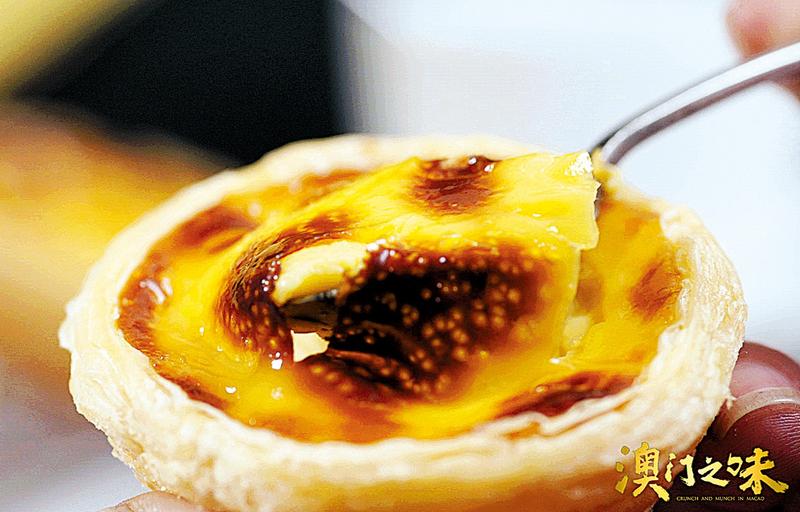 The iconic Macao egg tart. (PHOTO PROVIDED TO CHINA DAILY)
The iconic Macao egg tart. (PHOTO PROVIDED TO CHINA DAILY)
Aside from its alluring taste, food sometimes possesses power thanks to the legendary stories behind certain dishes. This is reflected in the tale of Leong Kam Hon, a former shipbuilder whose life was altered after a workplace accident which nearly cost him his arm in the 1990s.
Restarting his career by opening up a cafe, the determined man learned a recipe for hand-stirred coffee from a foreign couple. One cup requires constant stirring-at least 400 times-to mix sugar, hot water and instant coffee. With praise from Hong Kong superstar Chow Yun-fat, who stumbled upon his small venue and enjoyed a cup of the hand-whipped coffee, the cafe has since become a top draw for avid fans and curious tourists.
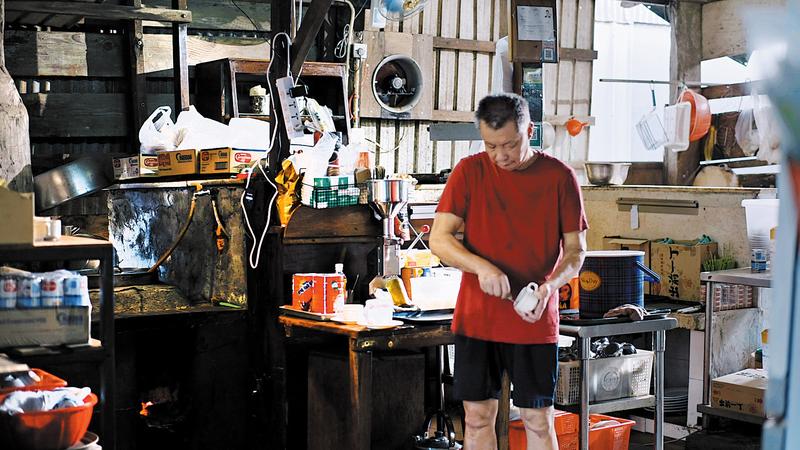 Leong Kam Hon, cafe owner, makes a cup of his signature hand-whipped coffee. (PHOTO PROVIDED TO CHINA DAILY)
Leong Kam Hon, cafe owner, makes a cup of his signature hand-whipped coffee. (PHOTO PROVIDED TO CHINA DAILY)
Such interesting stories abound in Macao-a Portuguese chef taking Macao as his second home to run a restaurant with his wife, a hospitable street vendor devoted to his porridge sales for over 60 years, and an American chef's experimental cooking of steaks in a special kitchen with a wall made of Himalayan salt blocks.
"Most of the legendary stories behind the delicacies are like a dialogue exchanged between different civilizations. If you take a look back at history, you find most cultural clashes were accompanied by violence or conflict," comments Zhang Tongdao, director of the documentary center with Beijing Normal University.
"Hence, a cultural encounter through food is beautiful and warm, making the documentary not just a mouthwatering treat but also a thought-provoking trip," he adds.
Contact the writer at xufan@chinadaily.com.cn



